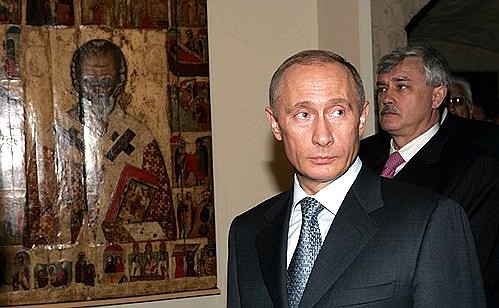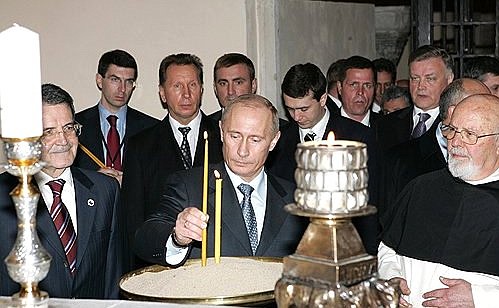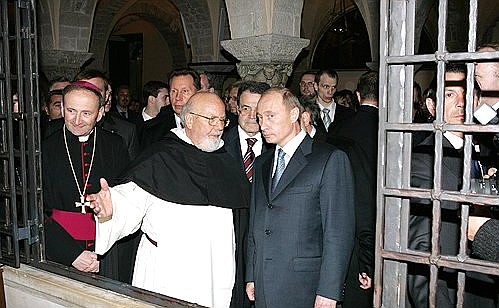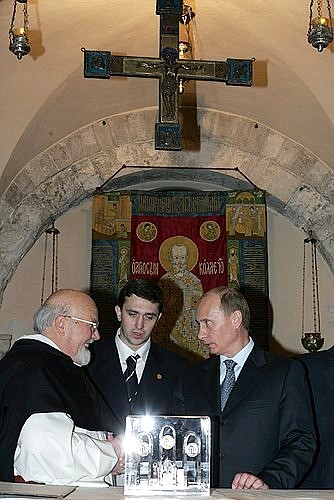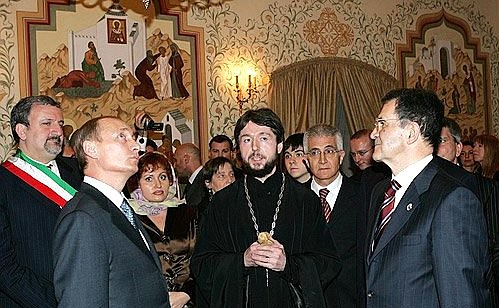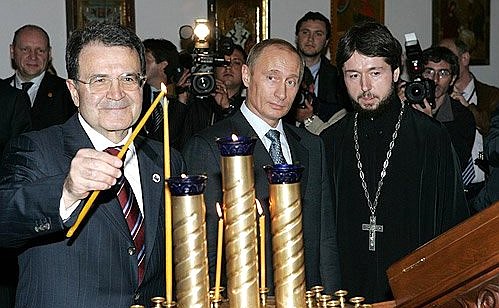The exhibition devoted to St Nicholas the Miracle Worker presented objects from different countries including icons and works of art from the VII-VIII centuries.
After visiting the exhibition, Mr Putin wrote in the guests’ book.
The President also visited the basilica where St Nicholas was laid to rest.
Father Domiano Bova, the basilica’s prior, told Mr Putin about the church’s history.
Mr Putin went down into the side-chapel where the saint’s relics are housed.
Father Bova presented Mr Putin with a gift of three medallions and a vessel filled with myrrh. Mr Putin showed his thanks by giving the prior a large silver candlestick.
The basilica, one of Bari’s most important churches, is a typical example of Romanesque architecture with most of the edifice dating back to the turn of the twelfth century. From the outside, it looks more like a fortress than a church, and was often used as a defensive edifice under the Normans. The basilica has four courtyards, formerly closed to the public, where fairs were held on holidays celebrating St Nicholas.
Mr Putin also visited the Russian Orthodox Church of St Nicholas the Miracle Worker.
The church was built in 1913 through Russian donations. Unable to properly look after and maintain the buildings, emigrant members of the Russian Palestine Society transferred the church to the Bari city authorities in the 1930s.
Starting in the 1940s, the Russian community in Bari used only the church building itself, which by the end of the century was in urgent need of repair. At the end of the 1990s, the Bari city authorities transferred the upper chapel and a number of residential buildings to the Moscow Patriarchate.
